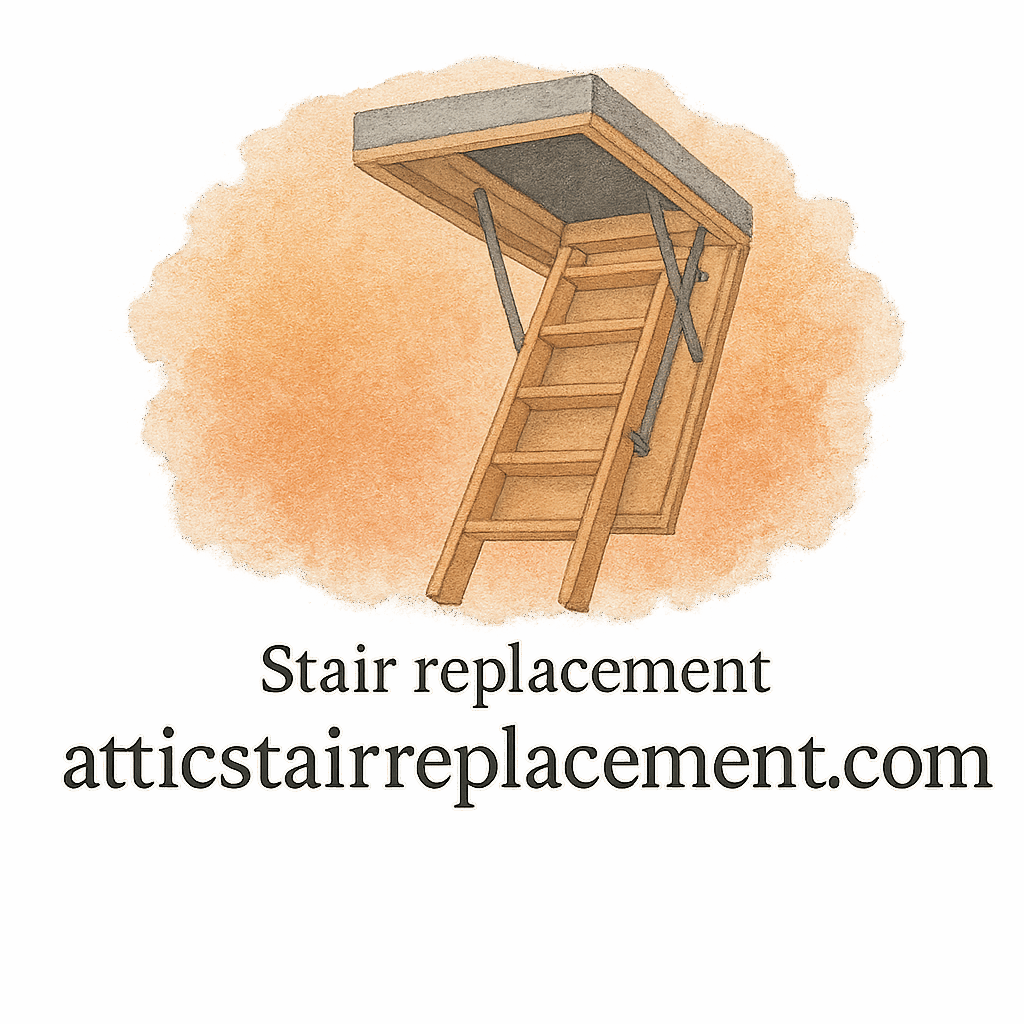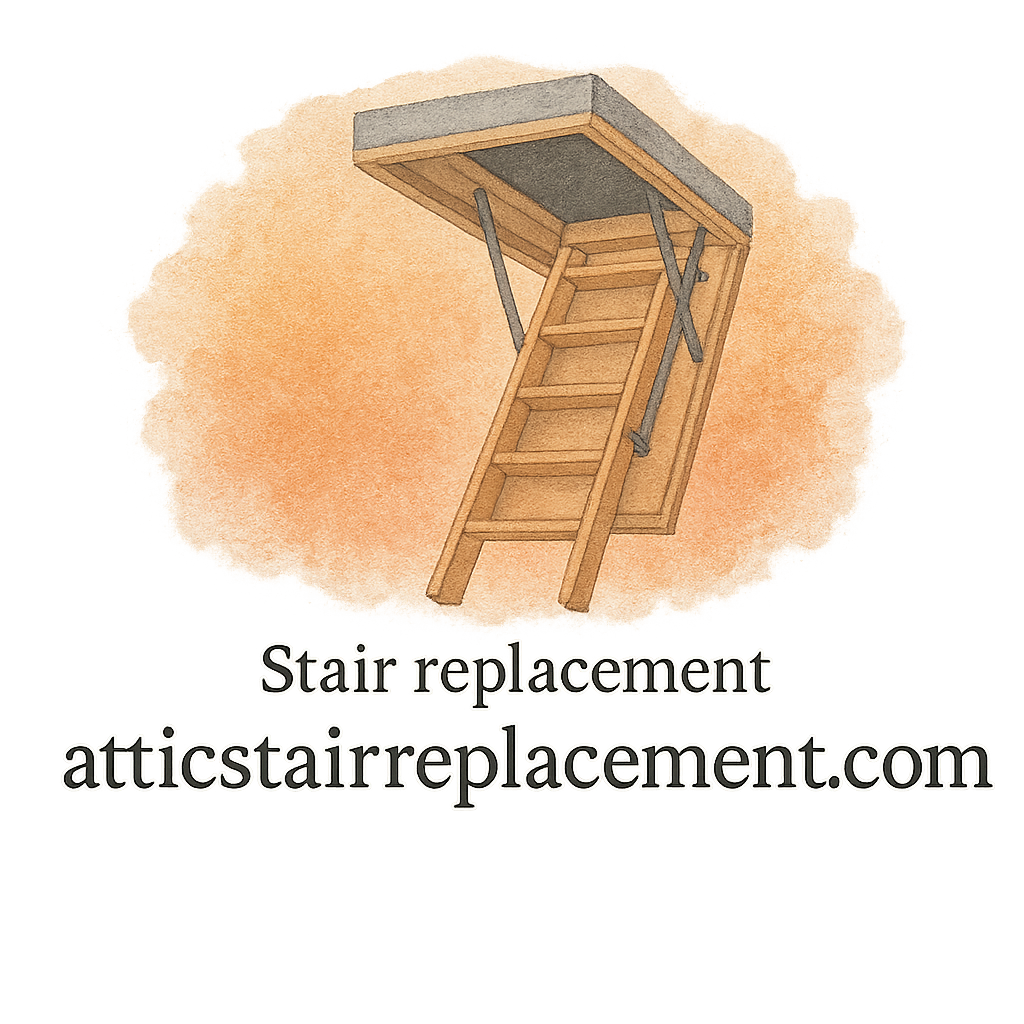Introduction: Why Attic Stair Replacement Matters
If you’ve ever wrestled with a rickety old attic ladder, you know exactly why attic stair replacement can transform your home. Attic stairs aren’t just a utility feature; they’re a bridge to valuable storage, hidden spaces, and sometimes even renovated lofts. Choosing the right style makes all the difference—whether you want something sleek, durable, or space-saving.
Before diving into the eight classic styles, let’s remember that attic stairs are an investment. They can affect your home’s safety, functionality, and even its value. And with so many styles available, from folding ladders to custom-built designs, there’s something for every home improvement project.
Style #1: Folding Attic Stairs
Benefits of Folding Stairs
Folding attic stairs are probably the most recognized type—and for good reason. They fold neatly into the ceiling when not in use, making them convenient for homeowners who don’t want a permanent staircase taking up floor space.
These stairs are especially popular in older homes because they’re easy to install and affordable. Plus, if you’re doing a DIY installation, folding stairs are a manageable project with the right tools and guidance.
Best Materials for Folding Designs
You’ll typically find folding attic stairs made of wood or aluminum. Wood feels sturdy and traditional, while aluminum is lightweight and resistant to warping. If you’re looking for durability and easy maintenance and repair, aluminum might edge out wood—but wood still wins in aesthetics for many homeowners.
Style #2: Telescoping Attic Stairs
Space-Saving Advantages
Telescoping attic stairs are a dream come true for compact spaces. Instead of folding, they collapse inward like a telescope. This makes them ideal for smaller attics or tight hallways where clearance is limited.
If you’re dealing with a budget-friendly attic stair replacement project, telescoping stairs can save not only space but also installation costs.
Durability and Safety Considerations
While lightweight, telescoping stairs need to be chosen carefully. Some cheaper models may feel flimsy, but high-quality aluminum or steel designs are surprisingly strong and durable. Always prioritize job quality and safety when selecting a model.
Style #3: Electric Attic Stairs
Smart Home Integration
If convenience is your top priority, electric attic stairs are worth the investment. With the push of a button, your stairs glide down smoothly—perfect for modern homeowners upgrading their renovation projects.
Imagine arms full of storage boxes and no hands free to pull down a ladder. Electric stairs solve that hassle instantly.
Cost vs. Convenience
Of course, this style comes with a higher price tag. Between the motor, controls, and installation, you’ll likely spend more than traditional designs. However, for many, the ease of use and sleek design make the investment worthwhile.

Style #4: Sliding Attic Stairs
Modern Appeal
Sliding attic stairs are gaining popularity because of their smooth, track-based mechanism. Unlike folding models, these stairs slide down in sections, offering a clean, modern look.
They’re ideal for homeowners who value aesthetics alongside practicality—making them a strong choice for remodel projects.
Installation Tips
Sliding stairs require careful installation to ensure the tracks align perfectly. If you’re new to DIY, you may want to call in a contractor to guarantee long-term functionality.
Style #5: Spiral Attic Stairs
Aesthetic and Design Flexibility
Spiral attic stairs are perhaps the most visually striking option. They bring elegance and character to a home, making them perfect for attic conversions into living spaces or offices.
They also save floor space, winding upward instead of stretching outward.
When to Choose a Spiral Option
Spiral stairs aren’t for everyone. They can be tricky to navigate while carrying bulky items. But if style and design are priorities in your home project, they’re hard to beat.
Style #6: Compact Ladder-Style Stairs
Best for Small Spaces
Sometimes, simple ladder-style attic stairs are the best choice. They don’t fold or slide; instead, they provide straightforward access in areas where other options won’t fit.
These stairs are a great budget-friendly solution, especially for attics that aren’t accessed daily.
Budget-Friendly Solutions
While ladder-style stairs are cost-effective, they require caution. Since they lack the sturdiness of folding or electric designs, they may not be the best option for heavy use.
Style #7: Heavy-Duty Wooden Stairs
Strong and Reliable
If strength is your top concern, heavy-duty wooden attic stairs are a solid choice. They can handle significant weight and provide a sturdy, traditional feel.
These stairs are often chosen by homeowners who use their attic for regular storage or converted living areas.
Long-Term Maintenance Needs
Wood requires care to stay in top condition. Regular inspections, tightening screws, and protecting against moisture are essential for extending their lifespan. Luckily, with proper care, wooden attic stairs can last decades.
Style #8: Custom-Built Attic Stairs
Tailored to Your Home Project
For homeowners with unique needs, nothing beats custom-built attic stairs. Whether you’re after a specific strong material, an unusual size, or a design that blends seamlessly with your décor, customization makes it possible.
Pros and Cons of Custom Design
The downside? Cost. Custom stairs are usually the most expensive route, but they deliver unmatched fit and finish. Consider them if your attic space doesn’t suit standard models.
Choosing the Right Style for Your Attic Stair Replacement
Budget Considerations
Your budget often narrows the field quickly. Folding and ladder-style stairs are affordable, while electric and custom options are pricier but more luxurious.
Safety and Job Quality
Always consider safety. Attic stairs should feel sturdy underfoot and provide confidence while carrying loads. Skimping here can lead to accidents and regrets.
DIY vs. Contractor Installation
If you’re handy, a DIY installation might be right up your alley. But for more complex styles like electric or sliding, hiring a contractor ensures professional job quality.
Common Mistakes to Avoid in Attic Stair Replacement
Ignoring Hidden Costs
Don’t forget the extras: insulation adjustments, ceiling reinforcement, or even repainting after installation. These hidden costs can sneak up quickly.
Overlooking Maintenance
Every attic stair style requires some level of maintenance. Failing to check hinges, bolts, or mechanisms can shorten lifespan and compromise safety.
Expert Advice for Successful Attic Stair Projects
Tips from Contractors
Experienced experts recommend measuring multiple times before ordering your stairs. Ceiling height, opening dimensions, and floor clearance all matter.
Preventing Future Repairs
Simple tips like lubricating moving parts and tightening hardware regularly can prevent future issues. A little care today saves costly maintenance and repair tomorrow.
Conclusion
Choosing the right style for your attic stair replacement isn’t just about aesthetics—it’s about function, safety, and long-term value. Whether you love the practicality of folding stairs, the sleekness of sliding designs, or the luxury of electric models, there’s a solution that fits your home perfectly.
Think about your budget, usage needs, and installation preferences. And remember: investing in quality now pays off with durability and peace of mind later.
For more guides, expert advice, and in-depth product reviews, check out Attic Stair Replacement.
FAQs
Q1. What is the most budget-friendly attic stair replacement style?
Folding or ladder-style attic stairs are typically the most affordable and practical for homeowners on a budget.
Q2. Are electric attic stairs worth the investment?
Yes—if you prioritize convenience and modern features, electric attic stairs are worth their higher upfront cost.
Q3. Which attic stair style is safest?
Heavy-duty wooden stairs and high-quality telescoping stairs are among the safest, provided they’re installed correctly.
Q4. Can I install attic stairs myself?
Yes, folding and ladder-style stairs are often suitable for DIY installation. More complex designs like electric or sliding usually require a contractor.
Q5. How do I maintain my attic stairs?
Regular maintenance includes tightening screws, lubricating hinges, and checking for wear or damage.
Q6. What hidden costs should I expect during attic stair replacement?
Possible hidden costs include insulation adjustments, ceiling reinforcement, and finishing work like painting.
Q7. How do I know which attic stair style is right for me?
Consider your budget, available space, safety needs, and how often you’ll access your attic before making a decision.


